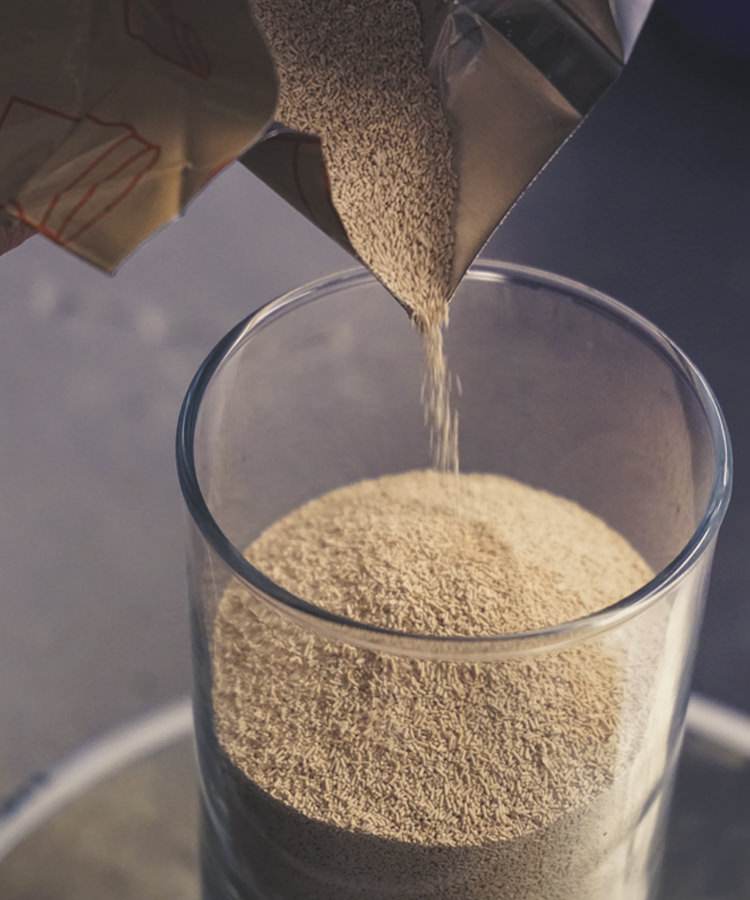Few beverages mark a momentous occasion quite like the pop of Champagne. Beers fermented with Champagne yeast, though, come pretty close.
Although there are more than 5,000 breweries in the country, beers brewed with Champagne yeast are relatively rare. Rate Beer, the crowdsourced beer-ranking website, lists only 180 beers made with Champagne yeast. Some are no longer in production. Those that are produced, however, quickly rise through the ranks of treasured beers and into the canon of collectable brews.
Champagne yeast can take an otherwise unremarkable brew and add “some umami that brings it all together,” Quinn Fuechsl, a brewer at Goose Island, tells me. “Even people who don’t like beer like our Champagne yeast beers.”
When done right, a beer made with Champagne yeast is unlike any other. When done wrong, it’s undrinkable.
What Champagne Yeast Can Do For Beer
Champagne yeast has a similar effect on beer as it does on wine. There are a few different kinds of commercial Champagne yeast: Pasteur quickly ferments in cold weather, Epernay originates in France and has a comparatively slow fermentation process, and Prise de Mousse can ferment juice up to 18 percent alcohol by volume.
Traditional beer yeast, both ale and lager, can create beers up to around 10 percent alcohol by volume. That number can be higher or lower depending on the specific strain; but in general, Champagne yeast creates a much stronger beverage whether it’s fermenting beer wort or grape juice.
Compared to the lush, juicy sweetness of ale and lager yeasts, Champagne yeast creates a desert-dry feel. For sweet beers and ciders that can be a positive, but it can ruin an already dry beer.
“The process (of brewing a beer with Champagne yeast) starts off with the conventional brewing process,” Thomas De Moor, the head brewer at the Malheur brewery in Belgium, told Breandán Kearney from Belgian Smaak. To make the brewery’s three Champagne-style beers, they start with ales they already have.
“After brewing, the top-fermented ale is poured into Champagne-style bottles for a secondary fermentation,” De Moor said. “This can take anywhere between three months and a year. After that, they get ready for the Champagne treatment.”
The treatment is méthode Champenoise, the traditional process that defines Champagne wines. The bottles are turned over a period of a couple weeks until the head of the bottle is facing downward and all the yeast falls into the neck of the beer. The neck is then frozen and the frozen yeast chunk is taken out of the bottle.
Méthode Champenoise is expensive, and not all breweries do it. Leaving active Champagne yeast in the bottle, however, can cause a bottle to explode because of the very active carbonation that Champagne yeast is known for.
When it’s done right, brewers have in their midst a beer that can stand up to any fine wine — and could convert a beer-adverse drinker into a beer lover.
Champagne Yeast Beers To Try
Goose Island Beer Company Gillian
A saison with light white pepper notes and a gentle honey sweetness. Dry like a sparkling wine, with just enough wine-barrel aging to add complexity.
A stout aged in bourbon barrels and refermented with Champagne yeast. There are chocolate, coffee and vanilla notes from the barrel, but it’s got a rich carbonation and high alcohol by volume that make it ideal for aging and for savoring.
A pilsner collaboration with Other Half Brewing Company, OH1 is crisp, clean, and delightfully refreshing. It’s bottle-conditioned with Champagne yeast, giving it vivacious carbonation that will make you jump to take another sip.
